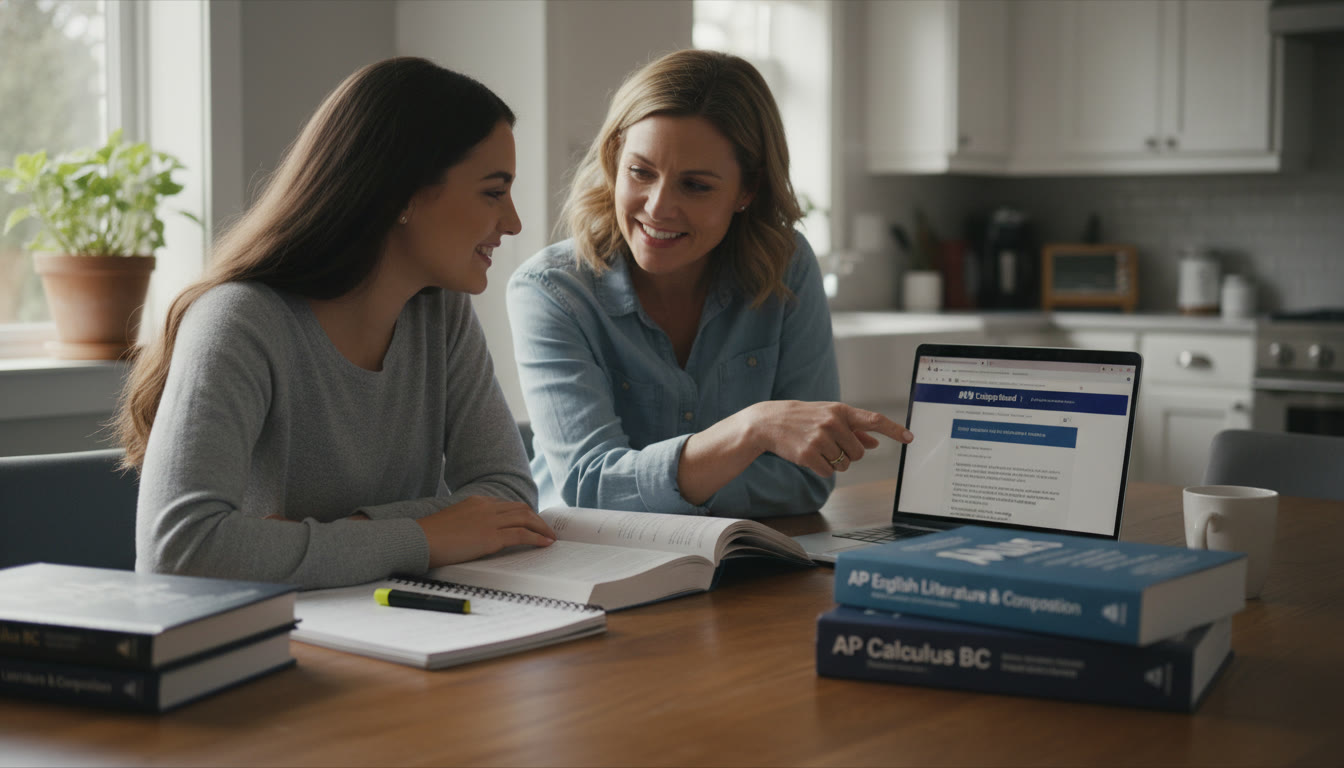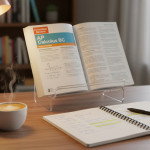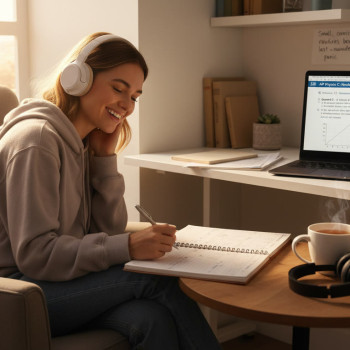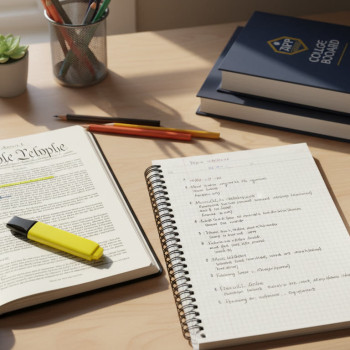Adaptive? Digital? Paper? AP Test Modality Basics Every Parent Should Know
Why modality matters—and why you should care
If you’ve been tuning into conversations about AP exams lately, you may have heard terms like “adaptive,” “digital,” and “paper” tossed around with varying degrees of confidence. As a parent, it’s natural to feel a little overwhelmed by the vocabulary and the implied changes: Will the test look different? Will scores be affected? How should my child study? This guide demystifies the three main modalities of standardized AP testing and gives practical, calm, experience-based advice to help you support your teen.

Quick overview: What each modality means
Before we dive into strategies, here’s a plain-language summary of the three modalities:
- Paper — The traditional pencil-and-paper test with printed questions and written responses.
- Digital — A computer-based test delivered on secure devices; questions and answers are entered and submitted digitally.
- Adaptive — A special kind of digital test where the difficulty of questions can change in response to the student’s answers. Adaptive testing aims to pinpoint ability more efficiently.
How the modality affects the test experience
Modality affects a few practical things: timing and pacing, the way students interact with questions (typing versus handwriting), and the test interface (navigation, tools, and on-screen calculators). It also affects logistics—where the test can be taken, what supervision is required, and what equipment is needed.
How modality changes preparation: what to focus on
Studying for APs is always a balance of content mastery and test strategy. The modality shifts how you prioritize those pieces.
For paper tests
- Emphasize handwriting practice for free-response sections—clear, legible answers can help graders follow the student’s logic.
- Simulate timed, paper-based practice tests. Print questions, time sections as on test day, and have the student write answers without digital tools.
- Teach physical test strategies: how to mark passages, cross out wrong answers, and manage physical scratch paper.
For digital tests
- Prioritize typing speed and clarity for written responses. Familiarity with keyboard shortcuts, copy/paste restrictions, and on-screen navigation reduces stress.
- Use full-length digital practice tests whenever possible to get used to the interface, timers, and digital calculators or equation editors.
- Train for attention to on-screen cues: question flags, navigation buttons, and toolbars. Small interface missteps can cost time.
For adaptive tests
- Teach strategic answering: adaptive tests often use early questions to set difficulty—encourage thoughtful but efficient responses at the start.
- Practice resilience and pacing. In adaptive formats, a streak of hard questions can be unsettling; emphasize that a mix of difficulty is normal and doesn’t mean failure.
- Use adaptive-ish practice tools where available—these mimic how question difficulty changes as the test proceeds.
Concrete examples: How modality changes common AP situations
Let’s look at realistic scenarios parents often worry about, and what modality means for each.
Scenario 1: Your child freezes at the sight of a long, messy free-response question
Paper: Teach annotation and marginal notes—writing short ideas in the margins helps break big prompts into manageable chunks.
Digital: Encourage typed outlines before answering. Many digital exam environments allow a scratch space—practice organizing thoughts quickly in that space.
Adaptive: Early practice matters. Adaptive tests can throw a tougher question early; building confidence with quick-outline routines reduces panic when difficulty spikes.
Scenario 2: Your child writes beautifully but types slowly
Paper: This is the ideal scenario—capitalize on neat handwriting and structure.
Digital: Slow typing is a risk. Build typing speed with focused drills and timed typed free-response practice. Even 10–15 minutes daily can help.
Adaptive: Same as digital, but emphasize early-section speed since adaptive algorithms may quickly escalate difficulty based on performance.
Tools parents can provide to remove friction
Modality-related issues are often solveable with practical, low-stress interventions. Here are things you can do:
- Create a tech checklist: reliable device, charged battery, comfortable keyboard, a quiet room, and a plan for internet outages (if the exam or practice requires connectivity).
- Designate a consistent practice space—same desk, lighting, and minimal interruptions.
- Help schedule timed practice sessions, alternating between paper and digital depending on expected test format.
- Encourage incremental typing practice: short daily writing sprints that build comfort without pressure.
Sample tech checklist table
| Item | Why It Matters | Quick Tip |
|---|---|---|
| Reliable Device | Reduces interruptions during digital practice and exam. | Test the device with a full-length practice run two weeks before the exam. |
| Keyboard Comfort | Typing speed and accuracy improve with a comfortable setup. | Consider an external keyboard for laptops with cramped keys. |
| Charged Battery | Prevents mid-test power issues. | Plug the device in during the exam if rules allow, and keep a charger nearby. |
| Quiet Space | Improves concentration, reduces anxiety. | Agree on household quiet hours for practice and test days. |
| Practice Platform Access | Familiarity with the interface cuts down on test-day surprises. | Use any official or high-quality practice platforms for at least 2–3 mock tests. |
How to choose practice mixes: paper vs digital practice balance
Many parents ask, “How much time should my child spend on paper practice vs. digital practice?” The short answer: prioritize the modality they will face on test day, but keep exposure to both. Here’s a simple weekly guideline you can adapt based on where your child is in preparation:
- If test is paper: 70% paper practice, 30% digital (to build keyboard skills and digital navigation).
- If test is digital or adaptive: 70% digital practice, 30% paper (to maintain handwriting comfort for note-taking and rough work).
- If modality is uncertain: 50/50 until test logistics are confirmed, then shift focus accordingly.
How to make practice realistic
Realism beats quantity. A three-hour, proctored, simulated test is far more valuable than two hours of unfocused practice. Arrange regular mock tests, replicate timing and breaks, and treat the practice environment as a “dress rehearsal” for test day.
Test-day logistics every parent should prepare
The logistics differ by modality. Make a clear plan so nothing on test day is a surprise.
Paper test day checklist
- Bring approved pencils, erasers, pens (if required), and a watch (if permitted).
- Know the test center location, arrival time, and required ID.
- Pack snacks and water for breaks, and plan transportation with buffer time.
Digital test day checklist
- Confirm device requirements well in advance and complete any required software installs or lockdown-browser checks.
- Charge the device fully and bring a charger if rules allow.
- Verify where scratch paper is allowed and how to use on-screen scratch tools.
Adaptive test day checklist
- Treat adaptive exams like digital exams but add extra reassurance: remind your child that question difficulty will vary and that this is normal.
- Practice stress-management techniques—deep breathing, small breaks between practice blocks, and a short warm-up routine before the test.
- Confirm scoring rules and question formats beforehand so surprises are minimized.

Common myths and realities
Let’s bust a few myths you might hear in parenting groups or online forums.
Myth: Digital tests are easier because they’re on a computer.
Reality: Digital tests change the medium, not necessarily the difficulty. The interaction is different (typing, navigation, calculators), so “easy” depends on how comfortable the student is with those tools.
Myth: Adaptive tests are unfair because they adjust difficulty.
Reality: Adaptive testing is designed to measure ability more precisely in fewer questions. A sequence of hard questions doesn’t mean a lower score — it means the test is trying to find the student’s true level. Proper preparation and familiarity with the format are the best defenses against anxiety.
Myth: Paper practice is obsolete for digital exams.
Reality: Paper practice still builds conceptual clarity and structured writing skills. It’s valuable even for digital exams, particularly in subjects where organizing thought on paper is helpful before typing.
How to support your child emotionally and practically
Academic preparation is half the story—emotional support is the other half. Teens respond well to structure, empathy, and practical coaching.
Practical support
- Help create a study schedule with clear, achievable goals and built-in breaks.
- Provide logistics support—book practice sessions, manage tech checks, and ensure restful sleep before test day.
- Encourage a portfolio approach: content review, timed practice, interface practice, and review sessions.
Emotional support
- Normalize nervousness—remind your child that everyone feels stress and that it can be managed.
- Celebrate process milestones (finished a full practice test, improved timing) rather than only scores.
- Teach short, practical calm-down techniques: box breathing, brief walks, or a five-minute mindfulness pause before a practice session.
When to consider extra help
If your child struggles with the modality itself—typing speed, anxiety with on-screen timers, or adapting to changing question difficulty—targeted support can make a big difference. Sparkl’s personalized tutoring can fit naturally here: a tutor can provide 1-on-1 guidance on the digital interface, tailor study plans to modality needs, and use AI-driven insights to track progress and adjust practice. This kind of tailored support is especially helpful when a student needs both content review and modality-specific strategy.
Signs your child might benefit from personalized tutoring
- Repeatedly underperforms on timed, modality-specific practice despite content knowledge.
- Expresses significant anxiety tied to the test format rather than the material.
- Has inconsistent practice habits and needs structure, accountability, and expert feedback.
Putting a 6-week plan together: sample weekly breakdown
Here’s a practical six-week plan to follow when an AP exam is approaching. Adjust the ratio of paper vs digital depending on the confirmed modality.
| Week | Focus | Practice Mix | Goal |
|---|---|---|---|
| Weeks 1–2 | Content review and weak-spot diagnostics | 60% Study, 40% Mixed practice | Identify gaps and set a baseline score through a mock test. |
| Weeks 3–4 | Strategy work and timed sections | 50% Practice Tests, 50% Targeted Review | Improve timing and refine approaches to free-response questions. |
| Week 5 | Full-length mock tests and interface familiarity | 80% Full Mocks, 20% Review | Simulate the test day experience; fix logistical issues. |
| Week 6 | Tapering, confidence building, and light review | 30% Light Practice, 70% Rest and Review | Conserve energy and reinforce key strategies. |
Final thoughts: flexibility and communication win
Modality shifts can feel like another item on the family’s long to-do list, but they’re manageable. The keys are clarity, realistic practice, and steady emotional support. Keep lines of communication open: ask your teen what specifically about the format feels challenging and address that directly. If the modality requires new skills—typing speed, digital navigation, or adaptive strategy—break those skills into small, daily wins.
Remember, preparation is not only about facts and formulas; it’s about habits, confidence, and the right tools. Whether your child is facing a pencil-and-paper AP or a dynamic digital/adaptive experience, a calm, organised approach will make a world of difference. Personalized help—like Sparkl’s tailored 1-on-1 tutoring—can accelerate progress by focusing on the exact skills your student needs, combining expert tutors with data-driven insights so practice time is efficient and stress is reduced.
One last tip for parents
Be the steady presence. Help with logistics, cheer on the small wins, and model balance: great test performance grows from consistent, thoughtful practice—and a teenager who knows you’ve got their back.
Good luck to your student. With the right plan, practice, and perspective, modality becomes a detail—not an obstacle.
























No Comments
Leave a comment Cancel